
Body lice are rather specific parasites. Generally speaking, they do not even belong to a separate species, but are just an evolutionary form of head lice that have changed their habits and way of life only for the short period that people dressed in clothes live on Earth.
Body lice cannot live in hair - their paws are not adapted for this, and therefore they usually do not linger directly on a person's head. But they managed to perfectly adapt to living in clothes - in its folds, between the seams, in folds and pockets - confidently clinging to the fabric itself.
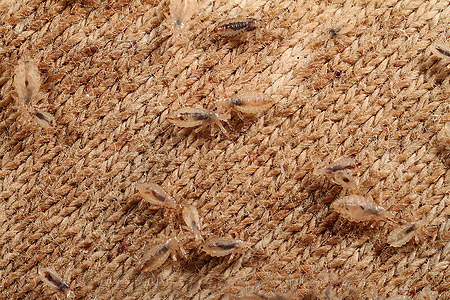
In general, the body louse is a parasite that lives in clothes. Here, the body lice gained several benefits: they had more room to feed, they were safer than on the head, and they were generally more comfortable. Still, a person has a more stable microclimate under clothing than on the head. But such adaptation to parasitism on clothes also has its drawbacks, which we will discuss below.
What do body lice look like?
Body lice look very similar to head lice.These are small insects with a body length of about 3-4 mm, whitish or grayish-yellow in color with a characteristic slightly elongated abdomen. The photo shows a body louse with a significant increase under a microscope:
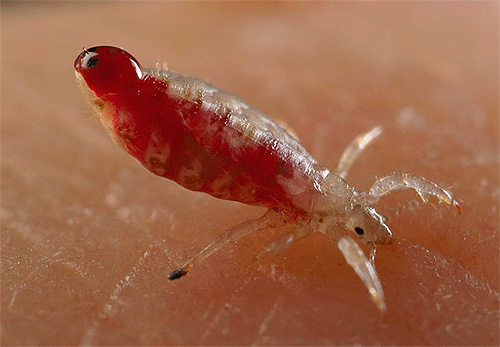
Body lice do not have wings, which makes it easier for them to move around in their hair. On the other hand, because of this feature, they do not have the ability to easily and quickly move between their owners.
In the photo - body lice on fabric:

And the following photo clearly shows how body lice look after blood is pumped:
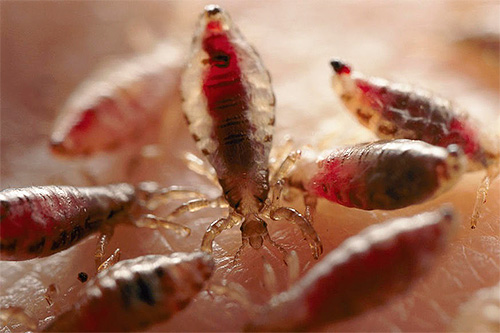
On a note
An adult body louse, especially after saturation with blood, can be confused with a flea, as its abdomen darkens and swells slightly. However, lice cannot jump, and if the parasites just crawl from the bite, it's definitely lice. In the photo - a body louse at the site of the bite.
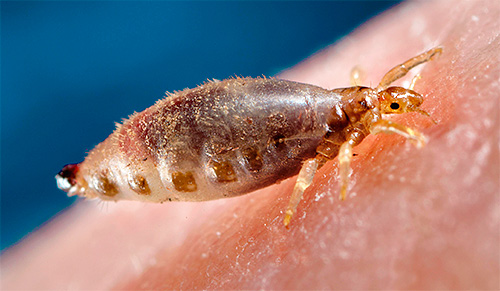
Body lice larvae differ from adult insects only in size - they reach a length of half a millimeter to 1.5-2 mm. During growth, they molt three times, and after that they turn into an adult insect.
Below in the photo you can see what the body louse looks like at the larva stage:

It is interesting
Only that stage of development of the louse that follows immediately after the egg is called a larva. The larva after the first molt is called a nymph.
Body lice eggs are called nits. They are attached to clothes with a special secret, and it is mechanically very difficult to tear them off from it. Each such egg has a slightly elongated shape and a length of about 0.5 mm. Usually, body lice nits can be quite difficult to visually detect on clothing.
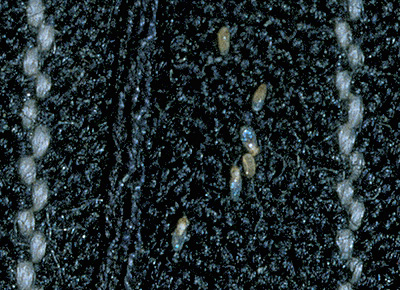
Lice on the human body are well distinguished from other parasites.Bed bugs are much larger and darker in color, fleas jump high and far, and ticks have 8 well-defined legs (there are only 6 in lice). Unless the smallest larvae of bedbugs can be confused with lice, but alone (without the simultaneous presence of large adults), such larvae are rare, and they almost never crawl under clothes.
Features of the biology and nutrition of parasites
Body lice are typical hematophagous, their only food is human blood. At the same time, they differ from most other parasites in that they prefer to live on the human body or in close proximity to it.
Head and pubic lice have learned to cling to the hair for a permanent stay near the food source, therefore they live and bite mainly in the hairy part of the body. Body lice, on the other hand, spend most of their time on the inside of linen, only moving to the human body for food. For this, they are also called body lice, as well as linen lice.
The photo below shows what body lice look like after drinking blood:
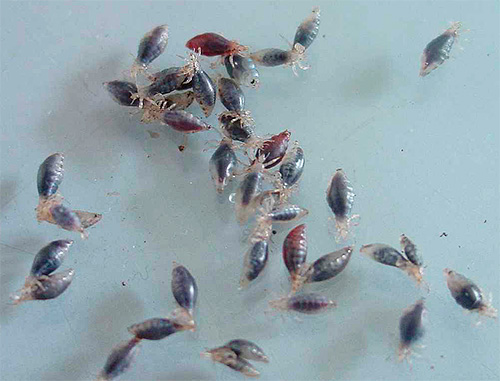
It is interesting
As noted above, head and body lice are different forms of the same species. Under natural conditions, even on the body of one person, they usually do not meet each other (after all, they are separated purely territorially), but under experimental conditions they interbreed and give viable offspring. At the same time, the offspring itself has more signs of head lice, as the main form.
Body lice spend most of their time between the seams, in the folds and frills of clothing. The photo shows the accumulation of parasites on synthetic insulation:

Lice avoid shiny, silk and satin clothes, love woolen and cotton fabrics.
You need to eat these insects at least 3-4 times a day, so lice on the body are regularly and constantly. However, for the same reason, insects are forced to parasitize only on those people who rarely or never change their clothes - if the clothes hang in the closet for 4-5 days, the body louse will not be able to get to food and will die of hunger.
This determines the contingent of victims of body lice - vagrants, beggars, refugees, soldiers in the war who cannot regularly change clothes; lice in their underwear find an ideal refuge. People who constantly wash their bodies and have at least two changes of underwear a week cannot live with body lice. In this they lose to head lice.
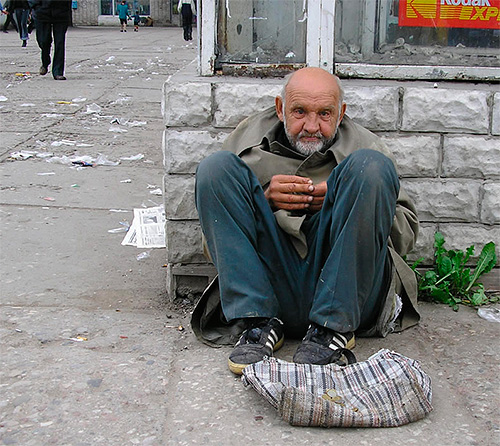
Linen lice breed in clothes. Here, nits develop in complete safety, and the larvae, after leaving the eggs, begin to lead the same lifestyle as adult insects.
The optimum temperature for habitation and reproduction of body lice: + 30-33 ° С. At a temperature of about +15°C, the development of their nits stops, and at temperatures below minus 13°C and above +60°C, the parasites die. This feature of body lice biology allows you to get rid of them by non-chemical methods, for example, by simply washing clothes in hot water or freezing clothes.
Body lice bites and their symptoms
Body lice bites are, in fact, one of the main problems caused by these parasites.When lice bite the body, a person can develop allergic reactions, severe itching, rashes and spots on the skin, and if the bite is too plentiful, ulcers, boils and even pyoderma.
The photo below shows typical body lice bites. They are quite similar to flea bites, but differ in the absence of noticeable chains of several bites, which are characteristic of bedbugs and flea bites:


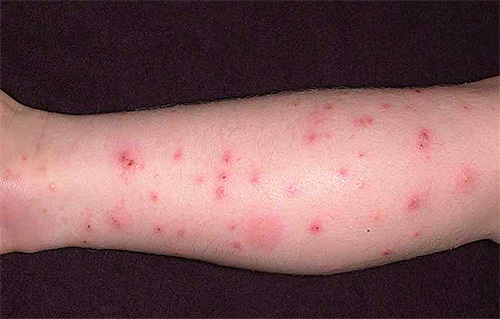
Lice are characterized by the absence of a long proboscis for a bite, and therefore they are forced to immerse part of their head into the skin. Because of this, the hole in the center of the bite is relatively large. The photo below shows a body louse during a bite:

It is by the presence of superficial skin lesions that body lice bites are easily distinguished from scabies - with the latter, there are no bites themselves, but there is a similar itch. In the photo below - irritation from scabies, well distinguishable from that of pediculosis:

Body lice bite the body mainly in the lower back, buttocks, sides, neck, armpits and thighs. In the hairy part of the body, they prefer not to bite.
Body lice bites cause a characteristic complex of symptoms, called body lice or body lice in medicine and referred to as typical parasitic diseases.
The characteristic symptoms of the appearance of body lice are:
- bites that usually heal within 3-4 days
- itching on the body, both in the area of bites and next to them
- manifestation of an allergic reaction, from a rash to generalized symptoms - fever, nausea, digestive disorders, headaches
- small blue spots on the skin
- pustular rashes
- nervous disorders due to constant itching.
And further: Lice are not cockroaches, so is it worth removing them with Dichlorvos? (the article has more than 20 comments)
Usually, people infected with body lice do not find the parasites themselves, but first feel these symptoms. At the same time, it is very important to take timely measures to destroy insects in order to prevent the appearance of boils at the site of bites and the development of purulent ulcers.
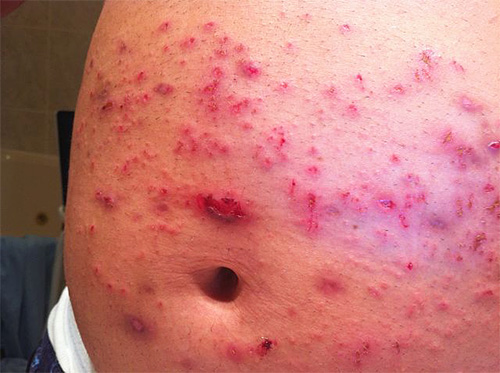
Typical symptoms of body lice infestation are not the worst thing that can happen after the appearance of these parasites. It is the clothes form of lice that is most often the carrier of pathogens of typhus and relapsing fever. - diseases, the epidemics of which in the past claimed thousands of lives in wars and in the poor areas of large cities. Today, outbreaks of these diseases appear mainly only in the countries of Asia and Africa, and they are mainly associated with lice.
How are body lice transmitted?
Despite being inactive, body lice can spread quite effectively between people. As a rule, they are transmitted through close contact between an infected and a healthy person, as well as through the use of someone else's clothing. This usually happens in:
- overnight stays for the homeless
- refugee camps, shelters during natural disasters
- trenches and tents during hostilities
- kindergartens and schools
- public transport
- saunas and public baths
- on tourist trips
- children's holiday camps
- dirty cheap hotels.
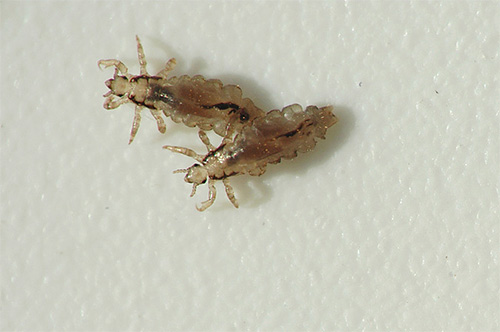
On a note
Body lice can survive in water for up to 2 days, and therefore they can, in exceptional cases, be transmitted by water even in open water. Such cases have been reported in India and Bangladesh.
By and large, any place where people gather can be a source of lice infestation.However, the easiest way for them to be transmitted is when people share clothes and underwear.
The fight against body lice and the treatment of body lice
Getting rid of body lice is not so difficult, and with the right approach, you can do it in just one day.

The easiest way is to contact the sanitary service or a special reception center. The audience there, of course, can confuse even the most inveterate optimist, but the means and methods of processing there are so powerful that they will make it possible to remove body lice in just a few hours.
You can also get rid of body lice at home. To fight them you need:
- Remove all clothes, load them into the washing machine, add any modern remedy for body lice, and in the absence of such, vinegar or tar soap, and wash things at the highest possible temperature. Ideally, things should be boiled or dry-cleaned for processing in a steam-formalin chamber.
- Bathe thoroughly, wash the body with a pediculicide cream or shampoo, leave the product on the body for half an hour, then rinse thoroughly.
- Wear clean clothes that have been stored in a closet or weathered outside for at least two weeks.
It is advisable to change bed linen after this. It is impossible to wear untreated clothing in the field of infection.
Treatment of body lice bites consists in treating them with alcohol lotions, Rescuer-type balms, and Asterisk. In the presence of allergic reactions, symptomatic treatment is used (headache remedies, painkillers, decongestants) and antihistamines.

It is important to remember that dealing with body lice and treating the consequences of their bites is always more difficult than initially avoiding infection.Therefore, for the prevention of pediculosis, you should avoid places where you can get lice, do not contact with strangers and untidy people, do not spend the night in dubious places, use only your hygiene items and clothing, teach children to follow the rules of hygiene and sanitation.
Under these conditions, even in difficult life situations, it is quite possible to avoid infection with lice and never get acquainted with pediculosis.
Be healthy!
Useful information about human lice
Interesting video: where do lice come from and how to deal with it

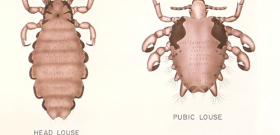
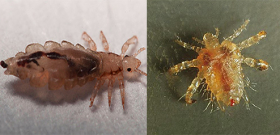
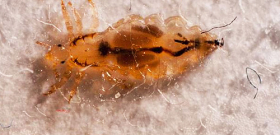
Thanks for the info!
Thanks for the info. I ran into this once when I rented an apartment in Khabarovsk on Sysoevo 17. Horror, all bitten, itchy, brrr.
Here is what I found. And she was also at the dermatologist - she was treated as if from the consequences of the removal of the gallbladder ... She came after the treatment, everything is fine, and in the evening the bite appeared again. Now I'm wondering where.It's just awful. Really. I will now look and deduce on my own, I am ashamed to go anywhere. What will come of it - then I will definitely unsubscribe. Oh my god, what a great family. How much time wasted: I thought, but did not want to believe that this could happen to me.
Many thanks for the information.
Faced in Ufa, thanks
I have alcoholic neighbors in a communal apartment, I went to them, and their bed is dirtier than the ground. Complete unsanitary conditions. And then my husband began to have some kind of spots, similar to bites, and mine. Where to go to the sanitary and epidemiological station? Can they force the neighbors to take it all out? Who knows, write.
I live in a rented apartment together. Someone bites, and at work, and at night, and in the subway. Never really caught anyone. I looked through all the things: the sofa, the underwear, and the clothes. Nobody gets bitten anymore. What could it be?
Help, 2 years I can not get rid of lice. Worst of all, they are an incomprehensible mixture of clothes and headwear. No chemicals work on them! I tried all the drugs in the pharmacy, from bedbugs, smeared with dichlorvos and slept for several nights in a row - nothing! I boil bedding, wash clothes with a special remedy for bedbugs, and still bites. Lice become smaller from effort, but they do not completely disappear ((Help, what should I do? Soon I will go crazy or accidentally poison myself from some muck.
Contact SES. This is the best remedy. Be patient, we are with you.
I received a gift from my beloved dog, I thought I was allergic to something. Then I saw it - it turned out to be pediculosis. Here, now I will process everything. And this still happens.
Once I also encountered such a gift, nothing took them, but one treatment with dichlorvos was enough. I think that this is the most effective means, no matter how denied.
My dog has lice! What to do, how to get rid of it, but I have three houses, help me.
Pubic and hair lice, as well as clothes lice, can easily be picked up at a hairdresser. The client, scratching below the navel and then scratching his head, easily transfers pubic lice to the hair, so the lice get on the comb and then on to other clients. Linen lice also crawl from clothes to chairs, armchairs and wander further to other people.
The best and proven method against lice is based on the fact that the fleas that live on our pets cannot tolerate the presence of lice on their territory. All. The method is simple. To do this, it is enough to get fleas, having closely communicated with a flea animal. Fleas, it should be noted, are much more active, meaner and mobile lice. Therefore, they will easily make kirdyk to your tormentors. Well, then you can easily remove fleas, for example, with gasoline. Or, given that they do not tolerate frost, subject them to freezing.
There are sand fleas, carried by animals, but they bite people. The same scheme is to wash all linen at a high temperature, treat the entire apartment with insecticides. As a measure of relief (not yet withdrawn) - essential oils such as eucalyptus, fir, lavender, clove oil - spray on bedding and on the floor. They sooo hate it and leave you alone until the smell wears off.
Healthy.